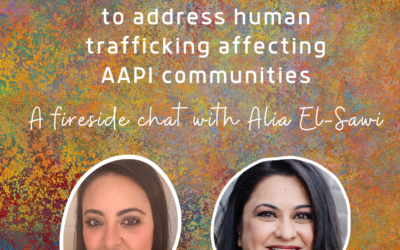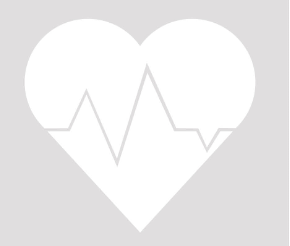Trafficking
Trafficking is fueled by demands for cheap, exploitable labor which have increased with globalization – which permits the free flow of capital but not labor. Some countries view trafficking as the only form of migration available to labor because all other sources are restricted or closed. They advocate safe migration as the way to halt trafficking. Complex ‘push-pull’ factors influence those who are trafficked, including economic factors such as paying off family debts, escaping poverty, remitting earnings, or escaping gender violence in the hopes of greater safety.
Statistics on Trafficking
- 10,359 human trafficking cases affecting 16,554 individual victims were reported to hotlines operated by the Polaris Project in 2021.
- Of these, 72% were sex trafficking cases, 10% were labor trafficking cases, 4% were sex & labor trafficking cases, and 13% were unspecified.
- Of the 13,486 survivors of known age, 59% were adults and 23% were minors.
- Of the 13,574 survivors of known gender, 65% were female, 17% were male, and 1% were gender minorities.
- Of the 2,227 survivors whose race/ethnicity was known the second largest group was Asian, at 24% (after Caucasian or White, at 30%).
Polaris Project: 2021 Data Analysis from the National Human Trafficking Hotline
- In 2022, the National Center for the Missing and Exploited Children (NCMEC) received more than 19,000 reports of possible minor sex trafficking.
- One in six of the 25,000+ cases of minors reported missing to the NCMEC in 2022 who had run away were likely victims of minor sex trafficking.
National Center for Missing and Exploited Children: Child Sex Trafficking
Data and graphics from Polaris Project: 2021 Data Analysis from the National Human Trafficking Hotline.
“Survivors play a key role in elevating understanding and awareness of human trafficking, improving service delivery, and informing policy.”
Sex Trafficking
Sex trafficking predominantly victimizes women and significant numbers of male and female children. It relies on the exploitation of female poverty and the impunity of male demands for commodified sex. Political positions about sex trafficking are cause for heated controversy because they are connected to positions that argue for abolishing, decriminalizing or legalizing prostitution. We recommend that advocates become informed about these positions when working with anti-trafficking programs.
Domestic Minor Sex Trafficking (DMST)
DMST is defined as the commercial sexual abuse and exploitation of minors through buying, trading or selling their sexual services. A commercial sex act refers to anything of value – money, drugs, food, shelter, rent, higher status in a gang – exchanged for sex. Purposes include: street prostitution; escort services; internet-aided prostitution; performing in strip clubs, massage parlors, peep shows; and/or pornography where a minor is sold, rented, or provided something of value to perform sex acts on camera.
Commercial Sexual Exploitation of Children (CSEC)
CSEC refers to a range of crimes including:
- Recruiting, enticing, harboring, transporting, providing, obtaining, and/or maintaining a minor for the purpose of sexual exploitation,
- Exploiting a minor through prostitution,
- Exploiting a minor through survival sex,
- Using a minor in pornography,
- Exploiting a minor through sex tourism, mail order bride trade, early marriage, and
- Exploiting a minor by having her/him perform in sexual venues.
Resources on Trafficking
PowerfuL Partnerships: Collaborative efforts to address human trafficking affecting AAPI communities, 2022
Alia El-Sawi, a Victim Assistance Specialist at the Department of Homeland Security, joins API-GBV for our first “fireside chat” hosted by our Executive Director Monica Khant. Drawing also from her previous role as the Anti-Human Trafficking Coordinator at a community-based organization that provides culturally-responsive services for survivors of human trafficking, Alia will discuss what can be done to increase coordination and communication between DHS agents and community-based advocates in responding to trafficking situations and minimizing trauma for survivors. The conversation will also illuminate challenges to current anti-trafficking efforts, including fear of reporting, human-trafficking’s concurrence with other forms of gender-based violence, and the abundant stereotypes around the trafficking of AAPI individuals.
Infographics: Trauma-Informed Advocacy for Survivors of Human Trafficking at Points of Contact, 2020
What survivors of human trafficking and the advocates who work with them have taught us about practicing trauma-informed advocacy at various points of contact. A set of shareable infographics
Trafficking: Trauma & Trauma-Informed Collaboration & Advocacy, 2018
Building from what trafficking survivors have taught us, this webinar discusses how to identify survivors, how past experience of help-seeking can influence current attempts, and the importance of trauma-informed care at different points of contact with survivors such as raids, arrest, and at shelters.
Considerations and Recommendations on Trauma-Informed Advocacy for Trafficking Survivors, 2017
This TA Brief addresses the complexity of advocacy for adult and minor survivors of trafficking. Topics include: Definitions, Analysis/Root Causes, Trauma-Informed Advocacy, Endangerment & Confidentiality, and Considerations & Recommendations at Points of Contact — raids, arrest, custody and release, legal processes, shelters, and health and mental health systems.
Intersections of Human Trafficking, Domestic Violence, and Sexual Assault: National Organizational Advocacy Roundtable, 2016
Advocates representing Native programs, domestic and sexual assault state coalitions, and direct service agencies examine the scope of the problem, resources, needs, challenges, strategies, and principles to build and sustain coordinated systems of service provision and survivor-centered advocacy.
Trafficking Resources List, 2017
A brief compilation of governmental agencies, NGOs, and resources about DMST/CSEC, healthcare, interpretation, legal services, and research.
For Help, Contact
National Human Trafficking Hotline
Call 1-888-373-7888 or text “BeFree” (233733)
Help is available 24/7 in English and Spanish
Shared Hope International: works to prevent sex trafficking and restore and bring justice to women and children who have been victimized through sex trafficking
1-866-437-5433
Courtney’s House: brings minor survivors into a safe environment to recover and heal, and offers training and consultation.
1-202-423-0480 (Hotline/Referrals)
Other Resources
Trafficking Resources for Advocates (2017) offers 60+ listings on governmental agencies, non-governmental organizations and coalitions, DMST/CSEC resources, health care response, interpretation for victims, legal resources, and research.
Beating Trauma: Elisabeth Corey, a survivor of family-controlled sex trafficking, shares her experiences and path to recovery as part of her mission to empower survivors and build awareness.
Freedom Network USA: a coalition of experts and advocates who provide training to social services, law enforcement and attorneys; and advocate for comprehensive services and effective prevention efforts in legislation and federal governmental policies. Find a network organization by state.
- Freedom Network’s Resource Library includes factsheets, promising practices, practical tools, and training materials developed by subject matter experts
The Human Trafficking Legal Center: Human Trafficking and Domestic Violence Fact Sheet (2018)
The Life Story: Moments of Change: a multimedia project elevating the voices and experiences of sex trafficking survivors and meant to inform the work of those who work at the intersections of education, housing, public health, mental health and addiction services, economic and racial justice, and other areas.
Office on Trafficking in Persons (OTIP): National Human Trafficking and Technical Assistance Center: delivers training and technical assistance to inform and enhance the public health response to human trafficking.
Polaris Project: combats trafficking by disrupting networks.
- Typology of Modern Slavery (2017) catalogs 25 types of trafficking
- 2017 Statistics from the National Human Trafficking Hotline and BeFree Textline
U.S. Department of State: Annual Trafficking in Persons Report
VAWnet: Special Collection on Human Trafficking (2014)
Walking Prey: How America’s Youth Are Vulnerable to Sex Slavery (2014) Holly Austin Smith’s book describes risk factor and predation; how traffickers and buyers operate; aftercare for CSEC survivors; tips for teens, parents, counselors, teachers; and resources for mental health professionals, law enforcement and other first responders.


